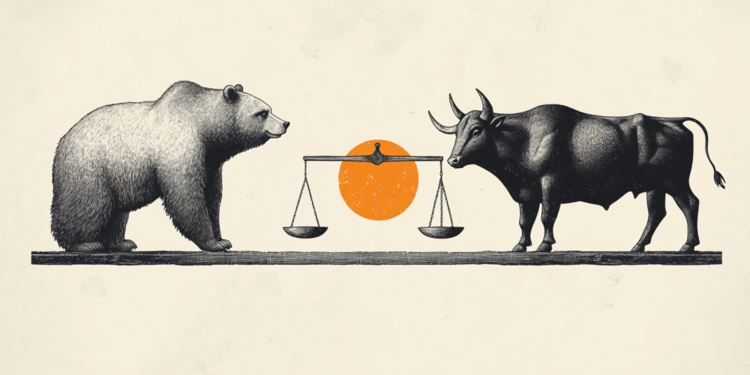- USD/CAD is weighed down by a combination of factors, though it lacks bearish conviction.
- Rebounding Crude Oil prices underpin the Loonie and act as a headwind amid a softer USD.
- The mixed technical setup warrants some caution before positioning for any further decline.
The USD/CAD pair remains on the defensive through the Asian session on Wednesday and currently trades around the 1.3765 region, down 0.05% for the day.
The US Dollar (USD) continues with its struggle to attract any meaningful buyers amid the growing acceptance that the Federal Reserve (Fed) will resume its rate-cutting cycle in September. Apart from this, a modest recovery in Crude Oil prices, from the lowest level since late June, touched on Tuesday, underpins the commodity-linked Loonie and weighs on the USD/CAD pair.
Meanwhile, US President Donald Trump’s executive order to raise tariffs on Canadian goods from 25% to 35% dampens the outlook for exports and the domestic economy. This comes on top of the Bank of Canada’s (BoC) dovish pause earlier, which could cap the upside for the Canadian Dollar (CAD) and act as a tailwind for the USD/CAD pair, warranting caution for bears.
Furthermore, oscillators on the daily chart are holding in positive territory and make it prudent to wait for strong follow-through selling below the weekly swing low, around the 1.3760-1.3755 area, before positioning for a further depreciating move. This will set the stage for an extension of the USD/CAD pair’s retracement slide from the highest level since May 22, which was touched last week.
Given last week’s failure near the 100-day Simple Moving Average (SMA), spot prices might then accelerate the downward trajectory towards the 1.3700 round figure en route to the 1.3670 region and mid-1.3600s. A convincing break below could expose the year-to-date low, around the 1.3540 area touched in June, with some intermediate support near the 1.3600 mark.
On the flip side, the overnight swing high, levels just above the 1.3800 round figure, could act as an immediate hurdle ahead of the 1.3840 region, or the 100-day SMA. Some follow-through buying, leading to a subsequent strength beyond last week’s swing high, around the 1.3875-1.3880 region, would negate the negative outlook and shift the bias in favor of the USD/CAD bulls.
USD/CAD daily chart
Canadian Dollar FAQs
The key factors driving the Canadian Dollar (CAD) are the level of interest rates set by the Bank of Canada (BoC), the price of Oil, Canada’s largest export, the health of its economy, inflation and the Trade Balance, which is the difference between the value of Canada’s exports versus its imports. Other factors include market sentiment – whether investors are taking on more risky assets (risk-on) or seeking safe-havens (risk-off) – with risk-on being CAD-positive. As its largest trading partner, the health of the US economy is also a key factor influencing the Canadian Dollar.
The Bank of Canada (BoC) has a significant influence on the Canadian Dollar by setting the level of interest rates that banks can lend to one another. This influences the level of interest rates for everyone. The main goal of the BoC is to maintain inflation at 1-3% by adjusting interest rates up or down. Relatively higher interest rates tend to be positive for the CAD. The Bank of Canada can also use quantitative easing and tightening to influence credit conditions, with the former CAD-negative and the latter CAD-positive.
The price of Oil is a key factor impacting the value of the Canadian Dollar. Petroleum is Canada’s biggest export, so Oil price tends to have an immediate impact on the CAD value. Generally, if Oil price rises CAD also goes up, as aggregate demand for the currency increases. The opposite is the case if the price of Oil falls. Higher Oil prices also tend to result in a greater likelihood of a positive Trade Balance, which is also supportive of the CAD.
While inflation had always traditionally been thought of as a negative factor for a currency since it lowers the value of money, the opposite has actually been the case in modern times with the relaxation of cross-border capital controls. Higher inflation tends to lead central banks to put up interest rates which attracts more capital inflows from global investors seeking a lucrative place to keep their money. This increases demand for the local currency, which in Canada’s case is the Canadian Dollar.
Macroeconomic data releases gauge the health of the economy and can have an impact on the Canadian Dollar. Indicators such as GDP, Manufacturing and Services PMIs, employment, and consumer sentiment surveys can all influence the direction of the CAD. A strong economy is good for the Canadian Dollar. Not only does it attract more foreign investment but it may encourage the Bank of Canada to put up interest rates, leading to a stronger currency. If economic data is weak, however, the CAD is likely to fall.
Read the full article here


